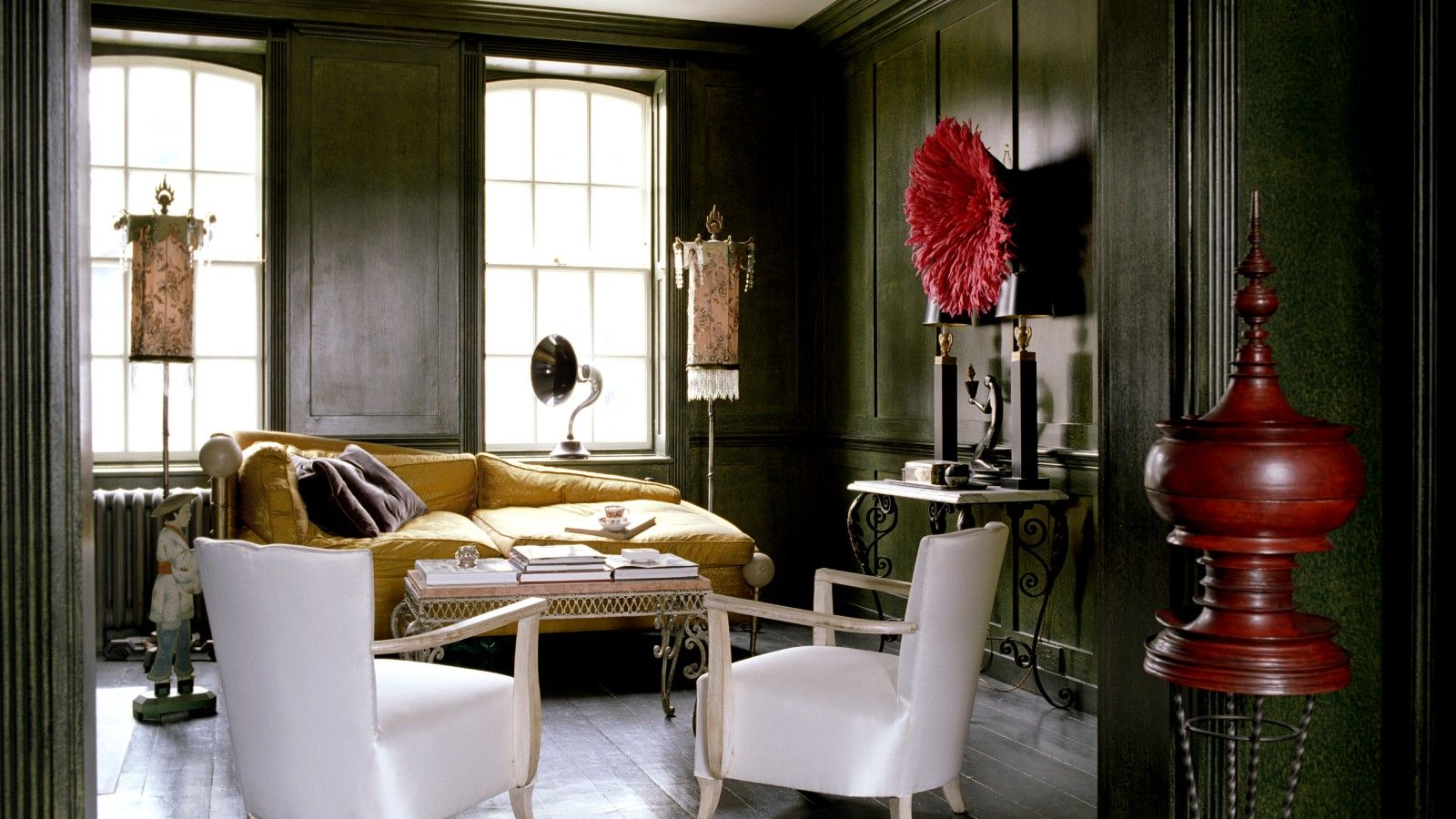Dark wall colors have been tainted with a bad name for some time now – and we think it’s about time that reputation was stripped.
The dimmer shades of the rainbow are often neglected when decorating our homes, with many folks fearing they will block out light and contract the space.
Contrary to this popular belief, dark colors can actually create the illusion of a larger room by absorbing the light and blurring the edges of the room. An inky-toned backdrop also serves to visually expand the size of furniture, making sofas and beds appear grander than they really are.
However, there is one major faux pas people make when using dark colors – failing to paint the skirting boards. This simple error can seem minor, but it has the potential to completely erase all your hard work.
“This is really key, and you must do this if you do nothing else,” interior designer Kate Watson-Smyth told Ideal Home magazine. “If you are using a dark color, you must paint your skirting boards to match your wall, and that will make your wall look taller.”
An expert in using dark colors, Kate also has a number of other top tips for nailing these trickier shades.

(Image credit: Andreas von Einsiedel/Getty)
Paint your radiator
Once you’ve filled in the skirting boards, your next call-of-action should be the radiator. Leaving the heater white is a common mistake when painting with dark colours, creating an unsightly distraction from the overall aesthetic of your room.
“So just get some eggshell paint, wood or metal paint and paint them to match the wall,” Kate advises. “They will disappear, and yes, they will still work.”
Expand the ceiling
Don’t worry, this technique doesn’t involve shattering your precious roof. Kate recommends painting to an invisible line several inches below the ceiling when using dark colors. Add a few coats of lighter paint to the leftover space and voila, you’ve created the illusion of a larger room.
“It blurs the edges of the ceiling down over the top of the wall,” Kate explains. “Because you are not drawing attention to the outlines of the room. You’ve folded the ceiling down.”
Don’t paint the ceiling white
Our go-to color for the ceiling is often pure white, but it doesn’t have to be.
Many DIY painters shy away from other colors, afraid that they will close in the room. Kate encourages novice renovators to be more experimental when painting the ceiling, reminding them of the wide variety of other neutral tones available.
“We spend a lot of time agonizing over the color of our walls,” she says. “We test it and we buy samples, and then the default position is to slap white paint on the woodwork and the ceiling.”



